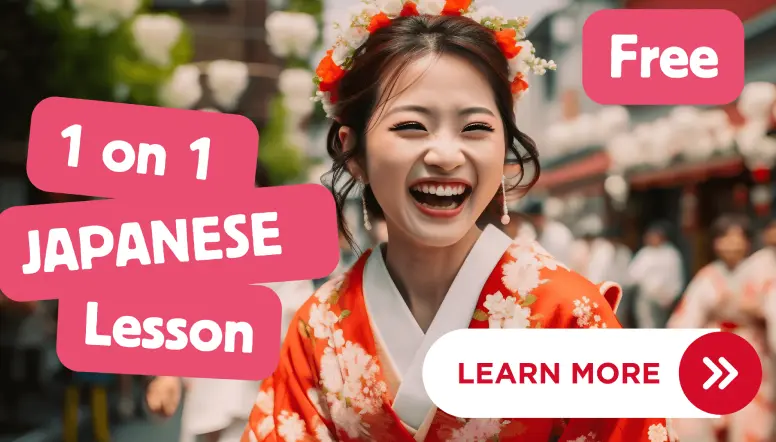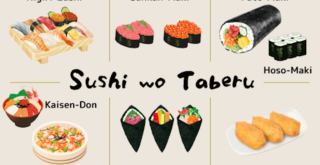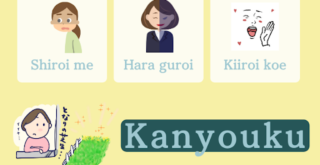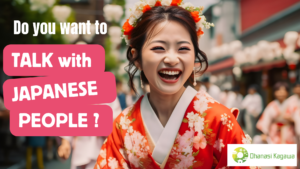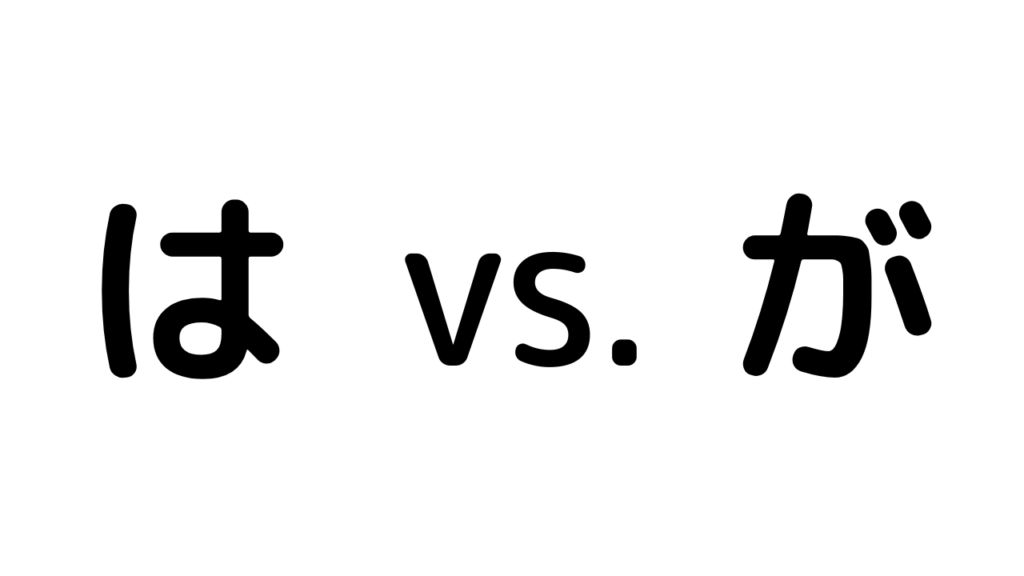
Learn Japanese
Japanese Culture
Ohanasi Kagawa
Ohanasi Japanese Language School
2023.06.01
How do you say “Do you speak Japanese?” in Japanese? Explaining you the grammar of “GA” and “HA”. is also explained.
What should you do when you want to ask someone if they speak Japanese? "Anata wa nihongo wo hanashimasuka?" is Japanese for "Do you speak Japanese?" For "Can you speak Japanese?", you can say, "Anata wa nihongo wo hanasemasuka?" Did you notice that there is a one-character difference between "do" and "can"? It is interesting how just one letter can change the meaning of a word. In this article, I will introduce the phrase "Do you speak Japanese? In addition, I will discuss the difference between the particles "HA" and "GA", as well as the difference between "do you?" and "can you?" Read to the end, and you will be able to ask questions in Japanese! Is "Do you speak Japanese?" means, "Do you speak Japanese?" The answer is, "あなたは、日本語を話しますか?" This is how to read it.あなた (anata) は (wa) 日本語(nihongo) を(wo) 話します(hanasimasu) か(ka)? Let's look at the points. (1) Japanese interrogative sentences end with "ka? at the end. (2) In Japanese "You (do) speak Japanese" ・you = あなた(anata)・(do) = は(wa)・speak Japanese 日本語を話します(nihongo wo hanasimasu): a polite version of 話す(hanasu) + Question "ka?" The diferent between ”Anata WA nihongo wo hanasimasu” and “Anata GA nihongo wo hanasimasu” Now lets look at the difference between, "Anata WA nihongo wo hanasimasu" and "Anata GA nihongo wo hanasimasu." The particles "は (WA)" and "が (GA)" are used according to what part of the sentence you want to emphasize. 「は(WA)」 ・The information you want to convey comes at the end. (eg. 新しい先生は山田先生です/ atarashii sensei wa yamada-sensei desu) ・Adjectives (eg. 桜の花はきれいです/ sakura no hana wa kirei desu) ・Noun sentences (eg. 明日は水曜日です/ ashita wa suiyoubi desu) 「が(GA)」 ・The information you want to convey comes at the beginning. (eg. 新しい先生が山田先生です/ atarashii sensei ga yamada-senseidesu) ・Dependent clause (eg. 私が起きたとき、母はいませんでした/ watashi ga okitatoki, haha wa imasendesita) ・Noun-modifying clause (eg. 猫が汚したソファは捨てました/ neko ga yogosita sofa ha sutemasita) "あなたは(WA)日本語を話しますか。" is trying to convey the "speak Japanese" part. On the other hand, "Do you (GA) speak Japanese? emphasizes the fact that it is "you" who are speaking Japanese (It's similar to a question: Are you the person who speak Japanese?). Therefore, "あなたは(WA)、日本語を話しますか?" is more appropriate. The difference from "Can you speak Japanese?" So far, we have summarized how to ask "Do you speak Japanese?" in Japanese. Then what about "Can you speak Japanese? The word that follows the verb in Japanese changes between can and do. The "話します" in "あなたは日本語を話しますか?" is: 話す(hanasu) = 動詞(speak) +ます(masu) = Polite (1)In case of “do” for 話す(hanas"u") Instead of the “i"、 it becomes 話し(hanas"hi")+ます(masu) (2)In case of “can” for 話す(hanas"u") Instead of the "e"、 it becomes 話せ(hanas"e")+ます(masu) If you want to learn Japanese In Japanese, "Do you speak Japanese?" is "Anata was nihongo wo hanasimasuka?" There are many things you can learn just by memorizing one Japanese phrase. In this article, we have explained the basic grammar, but you might not be able to use it right away. Also, Japanese might not use correct grammar. To learn to use them in conversation, it is a good idea to actually use them with Japanese people. However, there are some people who do not have Japanese friends or who find it difficult to go to Japan. That is why Ohanasi Kagawa holds online exchange events between Japanese and English learners. Japanese learners and English learners are paired, and you can switch languages every 15 minutes. This creates an environment where you can teach and learn from each other. This is a fun event for those who want to practice what they have learned. Come and have to see! Ohanasi Kagawa Website >>> That said, you might still not be confident in your Japanese speaking ability. You’re not sure how to study Japanese. For people like that, we are currently offering free Japanese language consultation and free lessons for a limited number of 10 people each month.You don’t know how to study Japanese. If you are interested in taking Japanese lessons to solve what you don’t understand, please feel free to join us.If you are interested, please click the URL or image below. Click here to see more details >>>
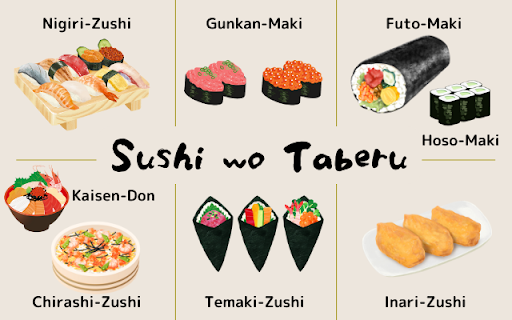
Japanese Culture
2023.02.25
Learn About the Different Types of Sushi and Enjoy Sushi Even More!
Sushi is always one of the top three things foreigners want to eat when they visit Japan. Eating good sushi in Japan is one of the things people probably look forward to doing. But do you know what real sushi is? Salmon and toro nigiri are not the only types of sushi. There are more sushi ingredients than you know. And there are many different types of sushi. Here are some popular types of sushi that Japanese people also love. What types of sushi are there? Do you eat sushi at a high-end sushi restaurant? Or do you eat sushi at a conveyor belt sushi restaurant? Sushi is an important part of Japanese culture. You can find cheap and tasty sushi in many places around you. You can also easily find sushi at convenience stores and supermarkets. Try the wide variety of sushi available in Japan. にぎりずし Nigiri-zushi Type of sushi with sashimi (sushi ingredients) on top of a bed of vinegared rice. Most people think of nigiri-zushi when they think of sushi. The most common types of sushi are: red fish, white fish, hikarimono (silver-skinned fish), boiled fish, squid, octopus, and tamagoyaki (egg omelet). You can use wasabi to your liking. ぐんかんまき Gunkan-maki Sushi made by placing ingredients like salmon roe, sujiko, or negitoro on a bed of vinegared rice and wrapping it with nori (seaweed). It is called gunkanmaki because it looks like a boat (gunkan). The fish roe is slightly seasoned, so it can be eaten as it is. まきずし Maki-zushi Also called Nori-maki. It is made by spreading sushi rice over a bed of nori and topping it with sushi ingredients. ふとまき Futo-maki Sushi rolled with multiple sushi ingredients, such as sashimi, egg omelets, and cucumber. During Setsubun (festival to celebrate spring), it is customary to eat sushi rolls called ehomaki to bring in "good luck." It is about five centimeters in size and is rolled with a lot of seafood. ほそまき Hosho-maki Sushi roll with a single ingredient. You can use ingredients such as cucumber, natto, negitoro, kanpyo (dried gourd), takuan (pickled radish), and so on. It is recommended when you want to eat only a little. ちらしずし Chirashi-zushi Sushi that is not hand-rolled. Shrimp, octopus, and other seafood, shiitake mushrooms, and a broiled egg are placed on a bed of vinegared rice. This sushi is beautiful. It is customary to eat it on Hinamatsuri (Girls' Day). かいせんどん Kaisen-don Sushi that has not hand-rolled sushi. It is usually served on a bowl of vinegared rice with sashimi, shrimps, salmon roe, and sea urchin on top. It is a gorgeous bowl of rice. てまきずし Temaki-zushi Sushi made by placing sushi rice on a small piece of nori and wrapping it around your favorite sushi ingredients and vegetables. Temaki-zushi parties are often held at home. It is also on the menu at conveyor-belt sushi restaurants. いなりずし Inari-zushi Sushi consists of sweet fried bean curd with sushi rice inside. You can use rice such as simple white rice, go-moku rice, and bean rice. At first glance, it does not look like sushi, but it is popular among children. Sushi available in the region There are sushi specialties in each region of Japan. Why not try them when you visit Japan on vacation? 【Toyama prefecture】Mashu-zushi Sushi rice wrapped in light red sakura salmon and wrapped with young leaves. It is also famous as an ekiben (station bento) at Toyama Station. 【Nara prefecture】Kaki no ha zushi Oshi-zushi that is made by placing thin slices of vinegared fish such as mackerel or salmon on vinegared rice and wrapping it in persimmon leaves. 【Okayama prefecture】Mamakari zushi Sushi made from small sappa fish (clupeoid) from the Seto Inland Sea coast, sprinkled with salt, and marinated in vinegar. Ohanasi Kagawa holds online language exchange events on weekends. Japanese language learners and English language learners are paired together. You then switch between English and Japanese every 15 minutes. This way, both of you can learn a language. Online, you can communicate with Japanese people without having to go to Japan. The rules are designed to ensure that you can participate safely. So, even if you are new to online events, please check them out. This is the perfect event for those who want to spend a little time in Japanese while maintaining their current lifestyle. Ohanasi Kagawa Website >>> That said, you might still not be confident in your Japanese speaking ability. You’re not sure how to study Japanese. For people like that, we are currently offering free Japanese language consultation and free lessons for a limited number of 10 people each month.You don’t know how to study Japanese. If you are interested in taking Japanese lessons to solve what you don’t understand, please feel free to join us.If you are interested, please click the URL or image below. Click here to see more details >>>
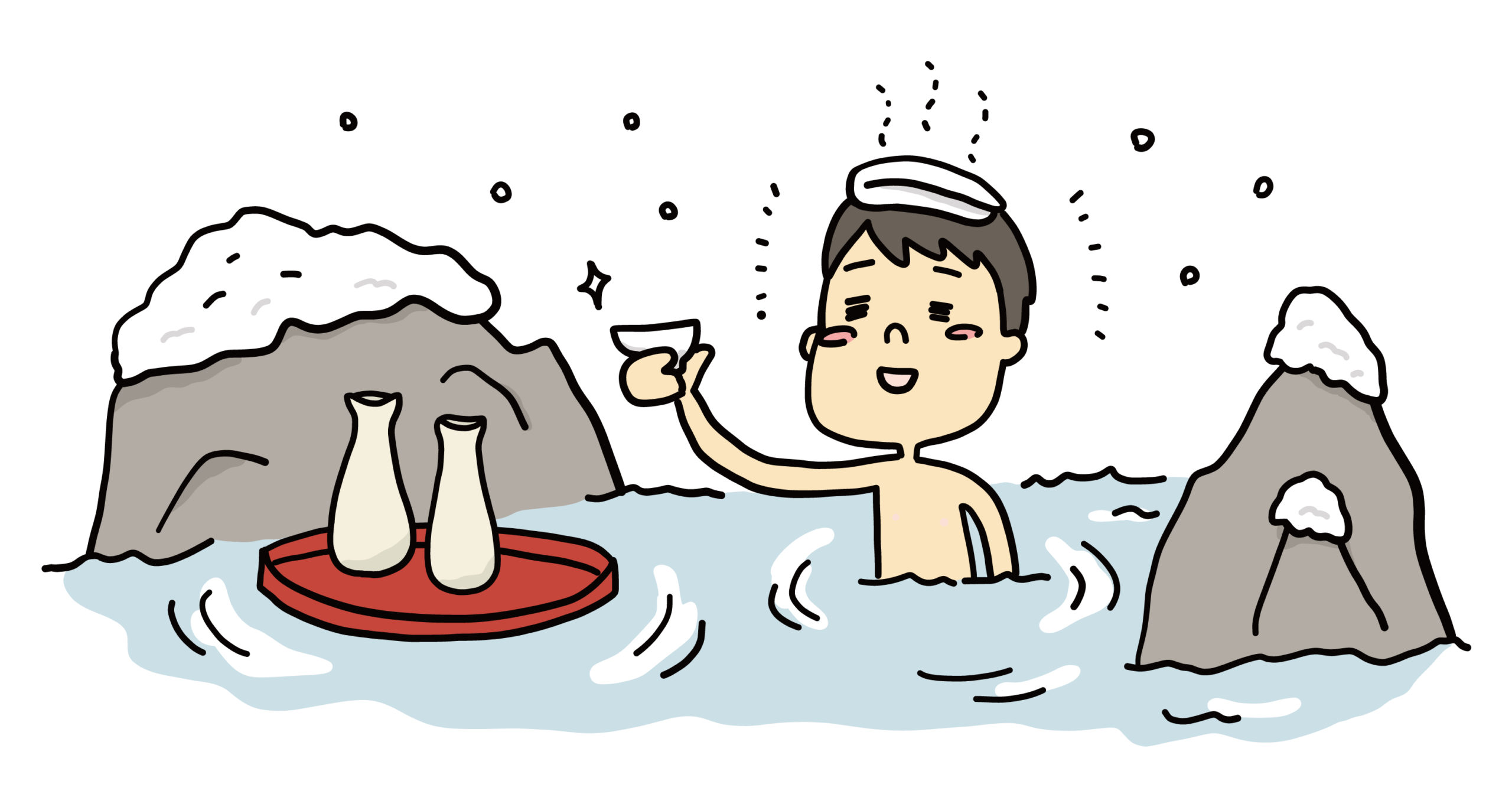
Japanese Culture
2022.11.15
Let’s go to an Onsen (hot spring)! How to enjoy Sento (public bathhouses)
Do you know what a “ スーパー銭湯 (せんとう) Super Sento” is? 銭湯(せんとう) is a public bathhouse. If you pay money, you can take a bath in a hot spring.スーパー “ means “great,” so a スーパー銭湯(せんとう) is more than just a bath house.There are restaurants, manga corners, massages, and many other services in addition to the baths.スーパー銭湯(せんとう) have been popular in Japan for several years.In the past, public bathhouses were considered to be for the elderly, but スーパー銭湯(せんとう) are now also becoming a dating spot for young couples.For about 2,000 yen, you can enjoy yourself all day long. Now, let me show you how to enjoy a スーパー銭湯(せんとう). The first step of enjoying Super Sento There is a shoe box at the entrance. First, take off your shoes. Lock (key) the shoebox. This picture is of a wooden shoe box. The key is also made of wood.The key has a number on it, so you don’t have to worry even if you forget where your shoes are.Once inside, there is a reception desk. In most cases, the receptionist will keep the keys to the shoe boxes. You can borrow towels. Some places offer free towels, and some charge a fee.I go without any, but my friends bring towels, shampoo, and body soap.You will receive a belt with a key, so put it on your wrist or ankle.You can put the key inside, just like in the picture.You can use this belt to shop and pay when you leave the store. What is "のれん"? There are separate men’s and women’s baths, so make sure you enter the right one.The public bathhouses have a cloth called “のれん Noren” (curtain).In most public bathhouses, blue is for men’s baths, and red is for women’s baths. Take off your clothes in the changing room (だついじょdatsujijo) and put them in a locker.After locking your locker, it is time to enter the hot spring.Before getting into the bathtub, take a shower to wash off your body.Be careful not to get your towel into the hot water, and enjoy the hot spring bath.No swimming! The most exciting time for me is after bathing in the hot springs.There is a vending machine (じどうはんばいき jidohan-baiki), so I have a cold drink.Milk, fruit milk, and coffee milk are popular, and my favorite is coffee milk. Caution at Super Sento At スーパー銭湯(せんとう), you can freely move between the hot spring section, manga corner, and restaurant.You can enjoy the hot springs as many times as you like while resting with manga and food at rest areas.One thing you should be careful of is that tattoos are not allowed in many Japanese hot springs.Please check the スーパー銭湯(せんとう) rules carefully and ask the staff at the スーパー銭湯(せんとう) if you are unsure about anything. I hope you could understand how good my favorite spots are.If you ever come to Japan, you should definitely visit a スーパー銭湯(せんとう)! Let's talk about Super Sento at Ohanasi Kagawa Events with Japanese people. Join Ohanasi Kagawa events →
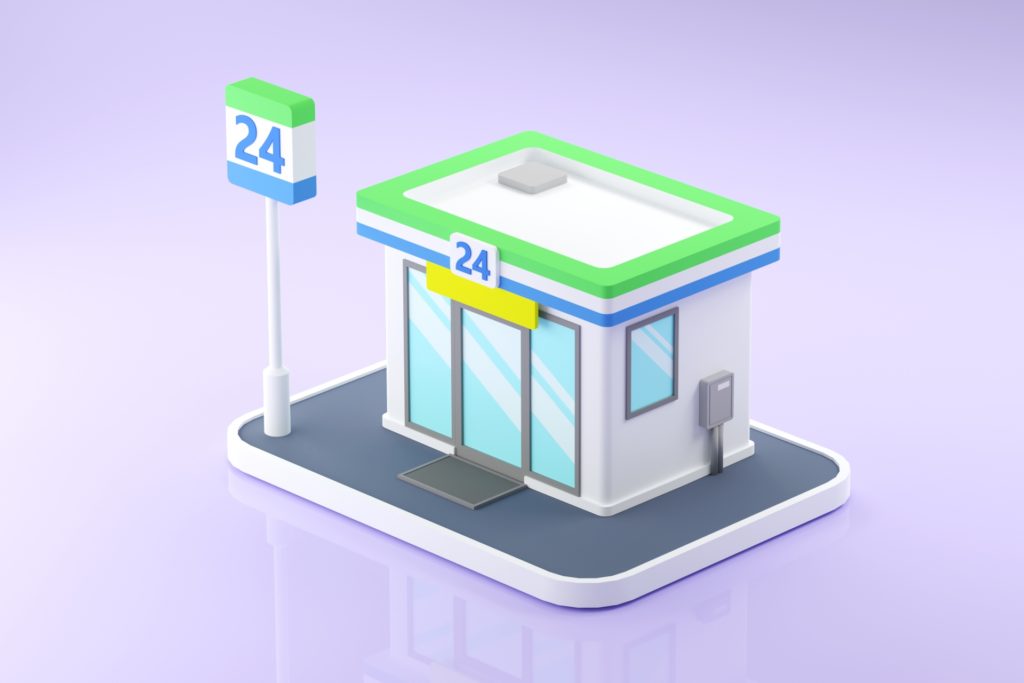
Japanese Culture
2022.11.14
Japanese Convenience Store Experience! What does it mean, “おべんとうあたためますか?
If you like Japan, you probably know how wonderful Japanese convenience stores are.Even in anime and manga, there are many fascinating stories about convenience stores.When you travel to Japan, one thing you should definitely put on your list of things to do is to shop at a Konbini!Convenience stores are full of delicious food and fun things to do. Seasonal sweetsNewly Released OkashiUnique Japanese sweet bread and ice cream No matter when you visit a Konbini, you will always find a variety of exciting products. To enjoy shopping at these Japanese convenience stores, I will teach you one phrase that you may hear at a convenience store. I will also introduce how to buy a convenience store bento box in Japan, and recommend some delicious convenience store foods. Read this article and expand your conversation on the topic of your favorite Konbini! ※ Konbini is a convenience store in Japanese Fun to buy bento at a convenience store. One of the things you look forward to in Japan is experiencing the food culture.We recommend trying the obento culture that is becoming popular in other countries as well.Convenience stores have a wide variety of obento available for you to try. Generally, a bento consists of rice and side dishes. A donburi is a bowl of rice topped with a side dish. Onigiri, sushi sets, and other standard bento are available. If you visit a Konbini for the first time, you must be surprised at the great variety of bento and the low prices. Let’s get familiar with the Japanese bento culture at a Konbini! 「お弁当あたためますか?」 When you buy a bento, the cashier will always ask you this phrase.The phrase means whether you want to heat up the bento you bought or take it home as it is.This is a service to make your bento tasty.Bento boxes are placed in the refrigerated zone for sanitary reasons. The cashier will heat up your bento in a microwave oven. レジ係(がかり)「お弁当(べんとう)あたためますか?」 Cashier“Would you like to warm up your bento?” お客 (きゃく)「おねがいします」 Customer“Yes, please. Wait a little while for the microwave oven to warm up the bento. You have to be careful. Ask the cashier to warm up your bento or rice bowl. Onigiri is tasty either cold or warm, so it doesn’t matter whether you warm it up or not. You should not warm up sushi. 「お弁当(べんとう)あたためますか?」“Would you warm up your bento?”If you know this phrase and what it means, you can definitely enjoy your bento at a convenience store! Try these convenience store foods There are convenience stores all over the city.Each store has its own unique characteristics.Each convenience store has its own delicious convenience store food. If you know these items, Japanese people may recognize you as a specialist in Japan! セブンイレブンの「おでん」(冬限定) Seven-Eleven’s “Oden” (winter only) ファミリーマートの「ファミチキ」Family Mart’s “Famichikiローソンの「からあげくん」Karaage-kun” by Lawsonミニストップの「ソフトクリーム」Ministop’s “Soft ice cream These are regular convenience store foods, so you can easily find them.I highly recommend these tasty items, which even if you eat them for the first time. Let’s talk about convenience stores at Ohanashi Kagawa! Join Ohanasi Kagawa Event →
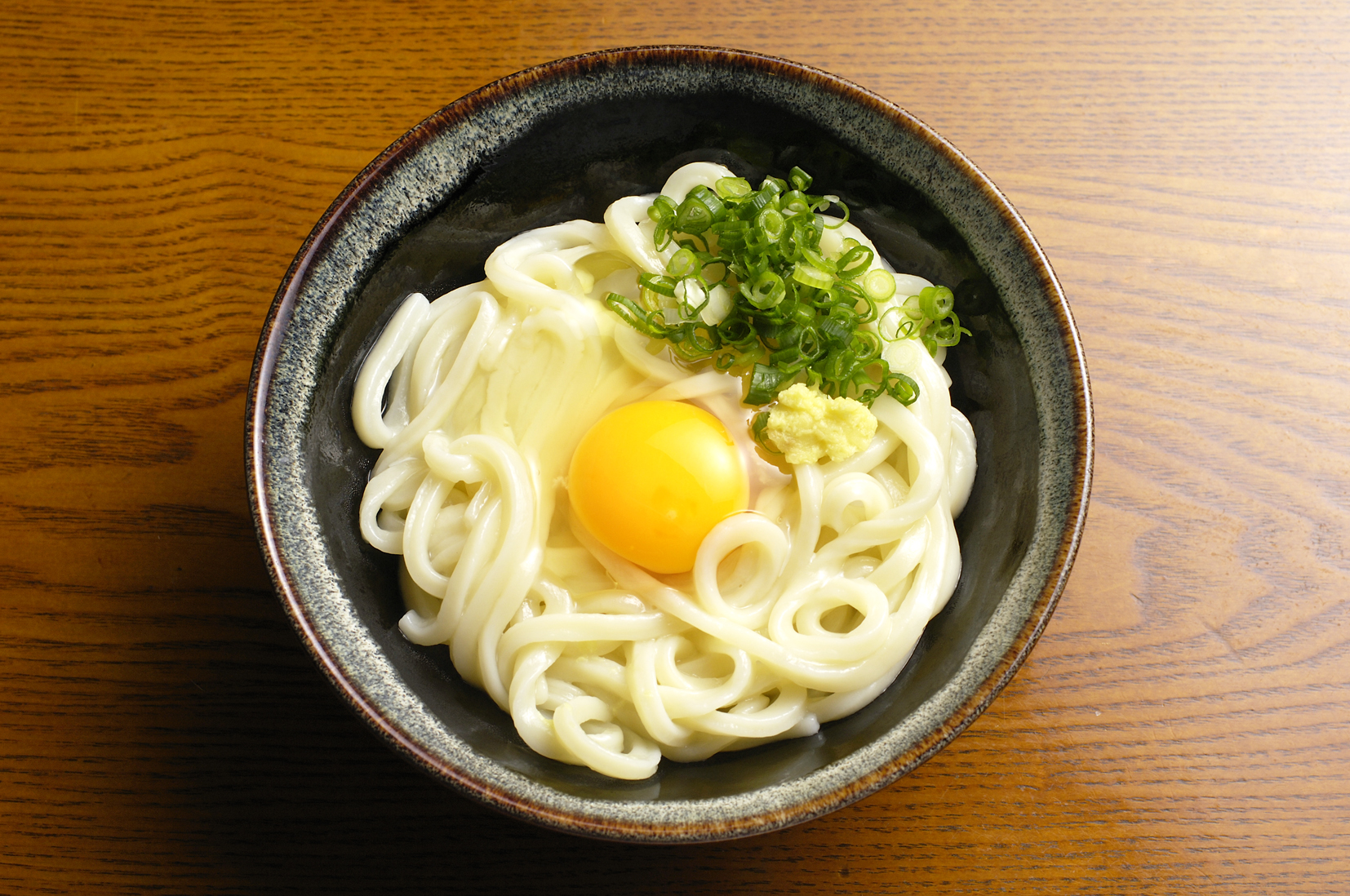
Japanese Culture
2022.11.13
Japanese Soul Food! Let’s Try Udon Noodles!
We will talk about the famous food of Kagawa Prefecture, home of Ohanashi Kagawa. In Japan, Kagawa Prefecture is best known for its udon! People in Kagawa eat udon for lunch two or three times a week. Kagawa is also known as Udon prefecture because of its many delicious and reasonably priced udon restaurants. Isn't it amazing? Of course, you can eat udon not only in Kagawa Prefecture, but anywhere in Japan. Udon has been around for a long time and can be called Japan's soul food. Sushi, tempura, and ramen are not the only delicious foods in Japan! Today, we will explain what kind of food udon is and why it is popular among Japanese people. What kind of food is Udon? Udon are white, thick noodles made of wheat flour. There are two types of udon: hot and cold. Both are eaten with Japanese soup stock. Types of Udon Udon can be found anywhere in Japan. There are various types of udon, depending on the region. Here are some of the common types of udon found in every region. かけうどん"Kake Udon" is a simple udon consisting only of noodles and soup stock. きつねうどん"Kitsune Udon" is udon topped with fried bean curd cooked in a sweet and spicy sauce. ぶっかけうどん"Bukkake Udon" is udon with boiled noodles and thick broth poured over them. にくうどん"Niku Udon" is udon topped with seasoned meat. てんぷらうどん"Tempura udon" is udon topped with shrimp and vegetable tempura. カレーうどん"Curry Udon" is udon with curry and broth. Where udon can be eaten Udon specialty restaurant Japanese restaurants Self-service restaurants in food court What do you mean by こしがある"firm" udon? When describing the texture of udon noodles, people use the word "koshi (firm)." Udon with "koshi (firmness)" are noodles that are chewy and firm. This is an important point for udon. It is similar to the al dente pasta that Italians value. Sanuki udon from Kagawa Prefecture is a typical example of udon with "koshi (firmness)." In Japanese udon culture, there are also udon without "koshi (firmness)." In the Kansai and Kyushu regions, soft and chewy udon is popular. The fact that each region from Hokkaido to Okinawa has its own particular udon culture means that udon culture is widespread in Japan. What do you mean by udon that "slide down the throat." のどごしがいい "Good nodogoshi" is another word used to describe the taste of udon. It is used to describe how smoothly the noodles slide down the throat. This term is used for noodles that are eaten by slurping, such as soba and ramen. Udon are a great way to end a sukiyaki meal. The fun part of nabe dishes is to add your favorite shime ingredients and eat them at the end. There are three types of shime ingredients: udon, rice, and ramen. Udon is recommended as a shime ingredient for sukiyaki. Udon goes perfectly with the sweet and spicy broth with dashi. If you have a chance to eat sukiyaki, try saying, "I'll have udon for shime." You will be recognized as a foreigner who understands Japan! Become an udon expert and join Ohanashi Kagawa!

